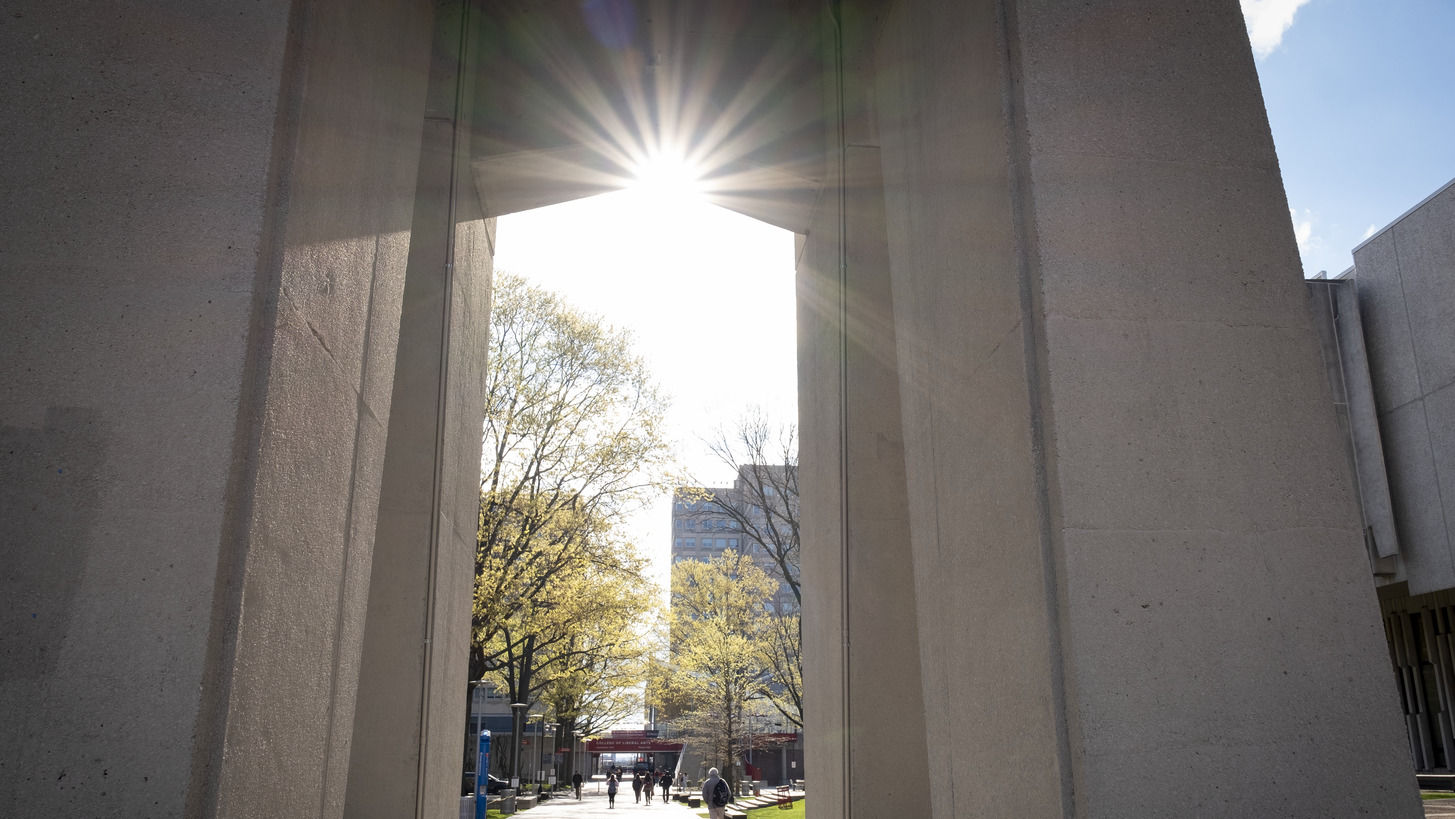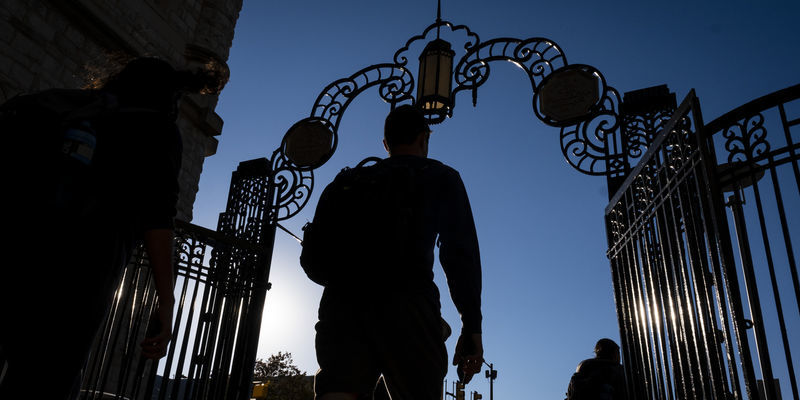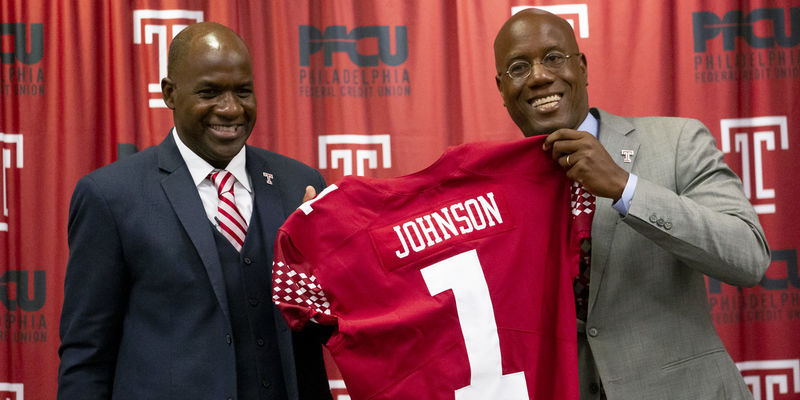Homicides near universities are a crisis that needs immediate action and long-term solutions
Temple University President Dr. Jason Wingard discusses how Temple is taking both immediate actions and also seeking long-term solutions when it comes to combating gun violence.

Originally published in the Chicago Tribune on April 18, 2022.
On Nov. 9, University of Chicago graduate student Shaoxiong “Dennis” Zheng was fatally shot during a robbery that occurred near the campus. Just three weeks later, Temple University senior Samuel Collington suffered the same tragic fate just two blocks from campus. Days later, Columbia University graduate student Davide Giri was fatally stabbed in the abdomen as he was jogging. Then, in January, Brianna Kupfer, a University of California at Los Angeles graduate student, was slain while working at a furniture store in Los Angeles.
Four promising lives ended in just moments. These random instances of violence, which occurred in major American cities and to students attending four of the most prominent urban universities in the nation, are indicative of the larger challenge facing our country.
We are officially at a crisis point.
Nationwide, college and university communities and our cities still are recovering from the pandemic. Now, that recovery is even more turbulent and elusive when it’s compounded by an unprecedented epidemic of violence.
Chicago saw 797 lives cut short in 2021 while Philadelphia recorded its deadliest year on record with 562 homicides. Los Angeles’ 397 homicides were its most in 15 years. And yet, until recently, institutions of higher education, even those in urban settings, have been primarily insulated from this type of violence.
Students come to cities such as Philadelphia and New York and schools such as Temple and Columbia for a reason. There is a specific value proposition that the urban universities offer; there are transformative opportunities for engaged scholarship, experiential learning, professional development and discovery of self, others and the world that can be found only in a metropolitan setting.
Historically and statistically, college campuses are among the safest places in the country, and the National Center for Education Statistics has reported a general decline in crime rates on college campuses over the past two decades. When looking at the broad picture, schools such as Temple University, the University of Chicago, UCLA and Columbia University remain safe campuses, and studies have also shown that the perception of crime on urban campuses doesn’t match up with actual crime. Still, there is no doubt that these random acts of violence have forced higher education leaders to step back and reassess our campus safety operations.
For some, the answer to solving this crisis is simple: more police. Parents of students at urban campuses across the country certainly believe this to be the case, and they have been very vocal in calling for this.
But that answer alone loses sight of the complexity of this issue. These universities border neighboring communities, and there is historical tension there, particularly because of how urban institutions of higher education have often shut the community out of key conversations. Shouldn’t these neighbors have a say in seeking the solution to the violence that is plaguing their towns?
Some members of the university community, particularly our students, recognize this. They realize that this is systemic and that it will take time, resources and people coming together to solve. They are also not in favor of having an increased police presence on campus.
However, isn’t this a time when both can be true? We’re witnessing historic homicide rates. Wouldn’t it be better to tackle this problem in several ways, including with some more boots on the ground?
Similarly, it is also key that we not lose sight of our mission and identities as institutions of higher education. Now, more than ever, we must continue to invest in, and support, programs that create educational opportunities, economic development and research regarding substance use disorders, trauma and violence reduction.
Unfortunately, our own key stakeholders seem to be almost entirely split on this issue. There is no middle ground, no recognition that this is a crisis that requires both an immediate and long-term response.
On any given day, we are inundated with messages from folks on both sides of the issue.
“Why are you hiring more police officers in Samuel Collington’s name? Disgraceful!”
“We need more officers hired now! What will it take for you to keep my children safe?”
I have written in the Chicago Tribune that universities need to embrace their rightful place as a force for rigorous debate and balanced discourse. In addressing the gun violence crisis, this certainly has been lost. It is OK to have it both ways.
We have taken a holistic approach at Temple. While we have committed to increasing our police force, launched a new campus safety app and taken several other immediate steps, we’re also keeping our eye on the long game. Through Temple Safety Net and a number of its innovative outreach programs, including Cradle to the Grave, Fighting Chance and Safe Bet, we continue to look at gun violence through a different lens. We also are incubating interdisciplinary research programs in anti-violence and anti-racism, which we know will play a key role in bettering outcomes for young people in North Philadelphia.
The U. of C. has taken a similar approach, gathering input from its campus, the local community and the city of Chicago in shaping its short-term and long-term safety solutions.
Not everyone is happy with the strategy taken by schools such as Temple and the U. of C. But we need to recognize that gun violence is bigger than ourselves.
Yes, it is true that we need to protect our students, and we will continue to invest in immediate resources to help ensure their safety. That can never be understated.
But we also need to protect tomorrow. We need to make sure that today’s youths have a future. The best way toward that goal is to support, fund and create programs that can do just that.
—President Jason Wingard


